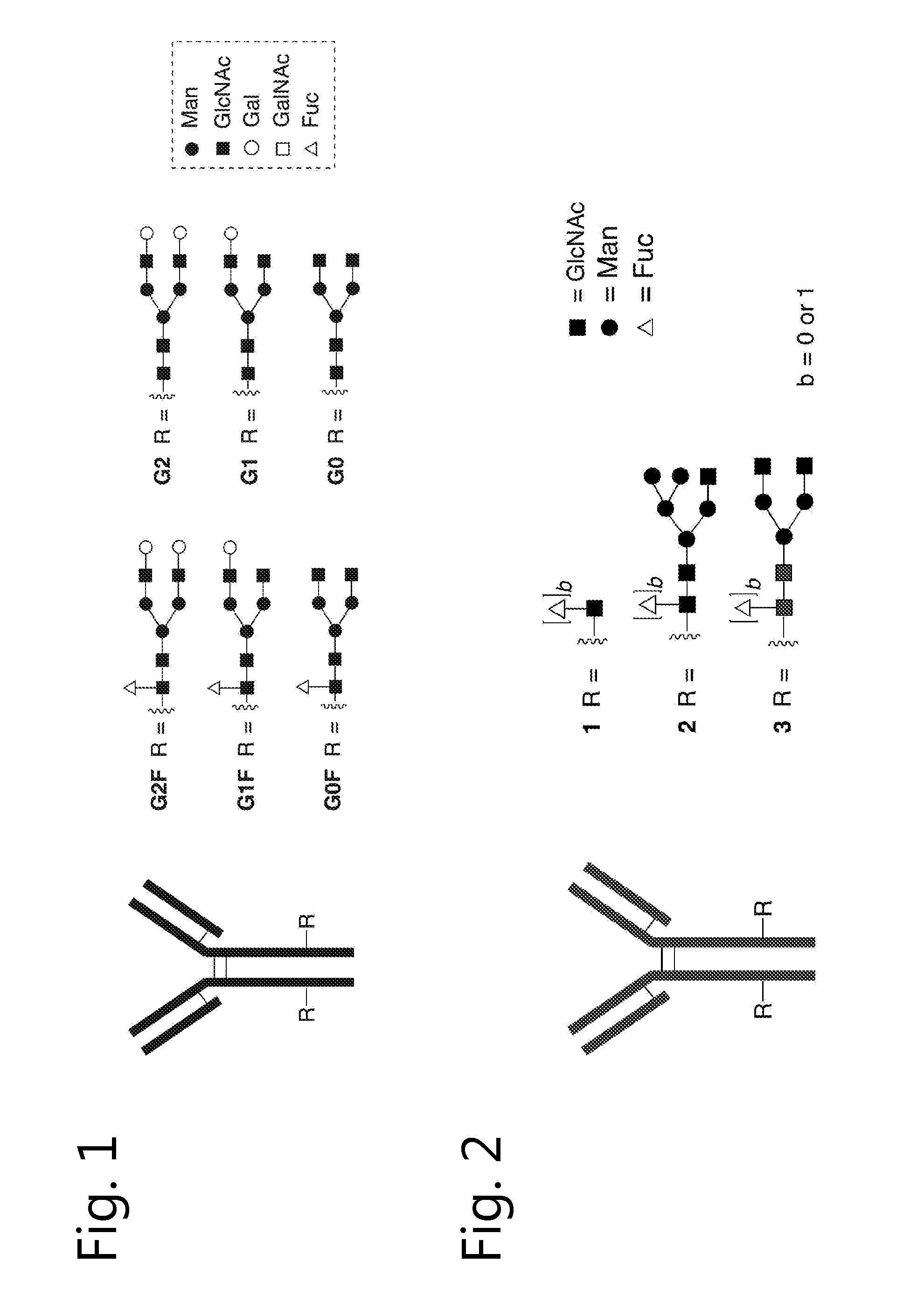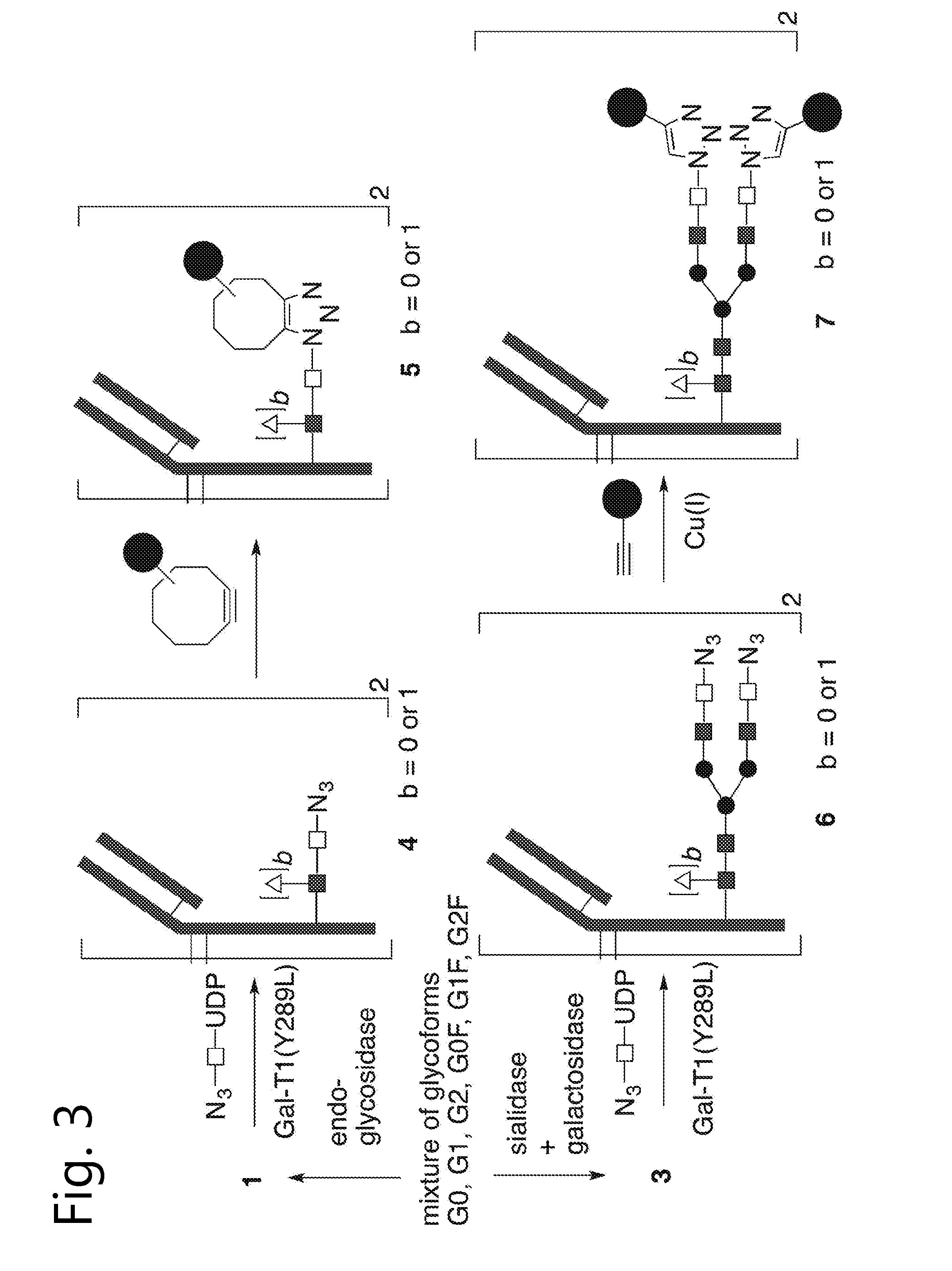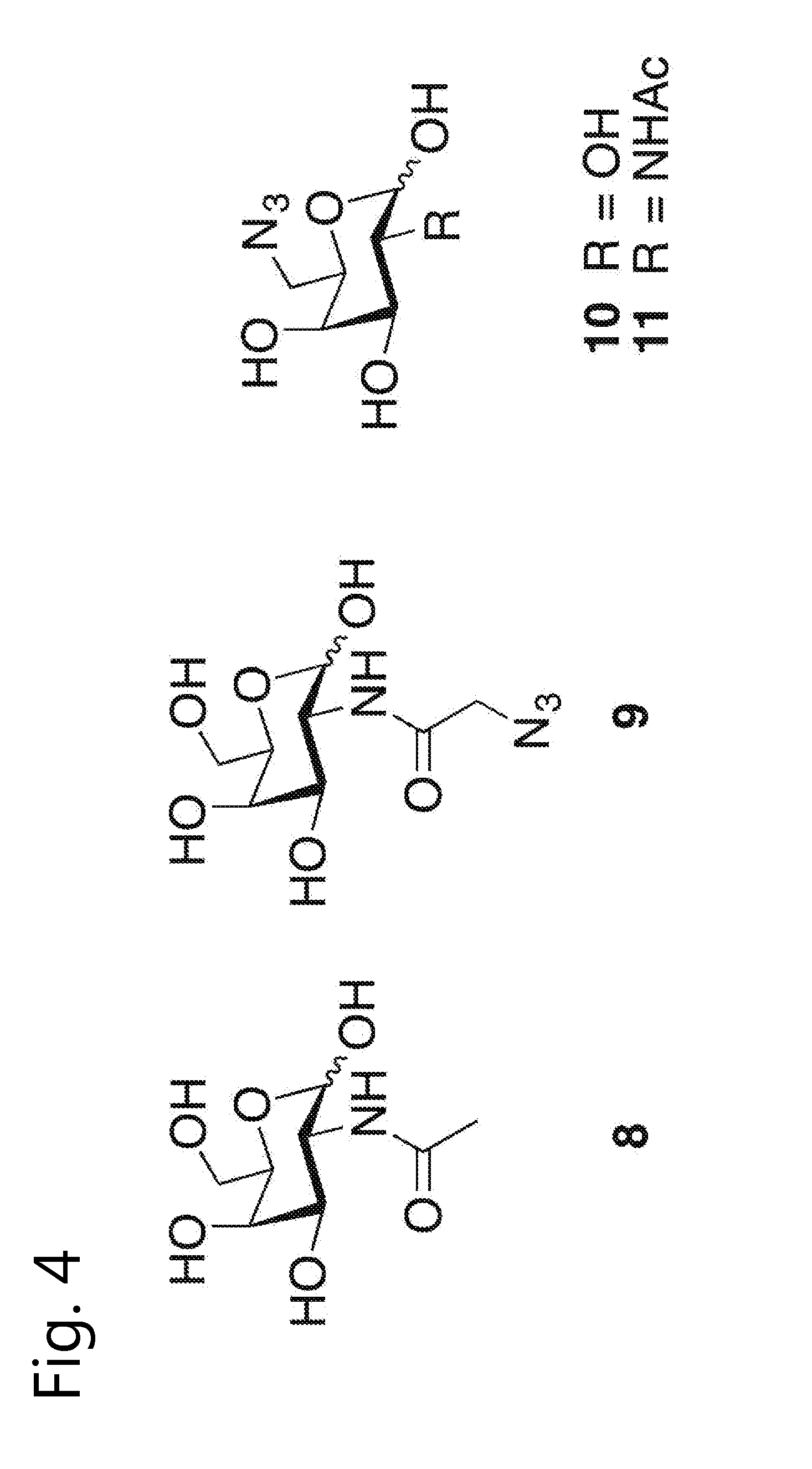Glycoengineered antibody, antibody-conjugate and methods for their preparation
a technology of modified antibodies and conjugates, applied in the field of glycoengineered antibodies, modified antibodies and antibody conjugates, can solve the problems of low site control of conjugation, unsatisfactory technology for conjugation based on cysteine-maleimide alkylation, and release of linker-toxin from antibodies
- Summary
- Abstract
- Description
- Claims
- Application Information
AI Technical Summary
Benefits of technology
Problems solved by technology
Method used
Image
Examples
example 1
Synthesis of BCN-PEG2-OSu carbonate (33)
[0318]A solution of N,N-disuccinimidyl carbonate (1.82 g, 7.11 mmol) in MeCN (50 mL) was prepared under argon. A solution of BCN-PEG2-OH (1.0 g, 3.55 mmol) in MeCN (50 mL) was added dropwise over 3 h. After 1 h of additional stirring, the reaction mixture was poured out in a mixture of EtOAc / H2O (150 mL / 150 mL). The layers were separated and the aqueous layer was extracted with EtOAc (150 mL). The combined organic layers were dried (Na2SO4) and concentrated. The residue was purified via column chromatography and the desired product was obtained as a colorless oil (0.79 g, 2.81 mmol, 79%). 1H NMR (CDCl3, 400 MHz) δ (ppm) 5.19 (bs, 1H), 4.50-4.42 (m, 2H), 4.16 (d, J=8.0 Hz, 2H), 3.77-3.71 (m, 2H), 3.57 (t, J=5.1 Hz, 2H), 3.39 (dd, J=10.5, 5.4 Hz, 2H), 2.85 (s, 4H), 2.35-2.16 (m, 6H), 1.65-1.51 (m, 2H), 1.41-1.34 (m, 1H).
example 2
Synthesis of BCN-vc-PABA-MMAF (34)
[0319]To a solution of Val-Cit-PAB-MMAF.TFA (17.9 mg, 14.3 μmol) in DMF (2 mL) was added BCN-PEG2-C(O)OSu (17.9 mg, 14.3 μmol) (33) as a solution in DMF (0.78 mL) and triethylamine (6.0 μL). The product (7 mg, 5 μmol, 35%) was obtained after purification via reversed phase HPLC (C18, gradient H2O / MeCN 1% AcOH). LRMS (HPLC, ESI+) calcd for C74H114N114N11O18 (M+H+) 1444.83. found 1445.44.
example 3
Synthesis of BCN-vc-PABA-β-ala-maytansinoid (35)
[0320]To a suspension of Val-Cit-PABA-β-alaninoyl-maytansinoid (commercially available from Concortis) (27 mg, 0.022 mmol) in MeCN (2 mL) was added triethylamine (9.2 μL, 6.7 mg, 0.066 mmol) and a solution of BCN-PEG2-OSu carbonate 33 (9.2 mg, 0.022 mmol) in MeCN (1 mL). After 23 h, the mixture was poured out in a mixture of EtOAc (20 mL) and water (20 mL). After separation, the organic phase was dried (Na2SO4) and concentrated. After purification via column chromatography (EtOAc→MeOH / EtOAc 1 / 4) 22 mg (0.015 mmol, 70%) of the desired product 35 was obtained. LRMS (ESI+) calcd for C70H97ClN10O20 (M+H+) 1432.66. found 1434.64.
Antibody Glycosylation Mutants
[0321]Both native trastuzumab and mutant antibodies were transiently expressed in CHO K1 cells by Evitria (Zurich, Switzerland), purified using protein A sepharose and analyzed by mass spectrometry.
[0322]Specific mutants of trastuzumab were derived from literature (Qu et al., J. Immunol...
PUM
 Login to View More
Login to View More Abstract
Description
Claims
Application Information
 Login to View More
Login to View More - R&D
- Intellectual Property
- Life Sciences
- Materials
- Tech Scout
- Unparalleled Data Quality
- Higher Quality Content
- 60% Fewer Hallucinations
Browse by: Latest US Patents, China's latest patents, Technical Efficacy Thesaurus, Application Domain, Technology Topic, Popular Technical Reports.
© 2025 PatSnap. All rights reserved.Legal|Privacy policy|Modern Slavery Act Transparency Statement|Sitemap|About US| Contact US: help@patsnap.com



